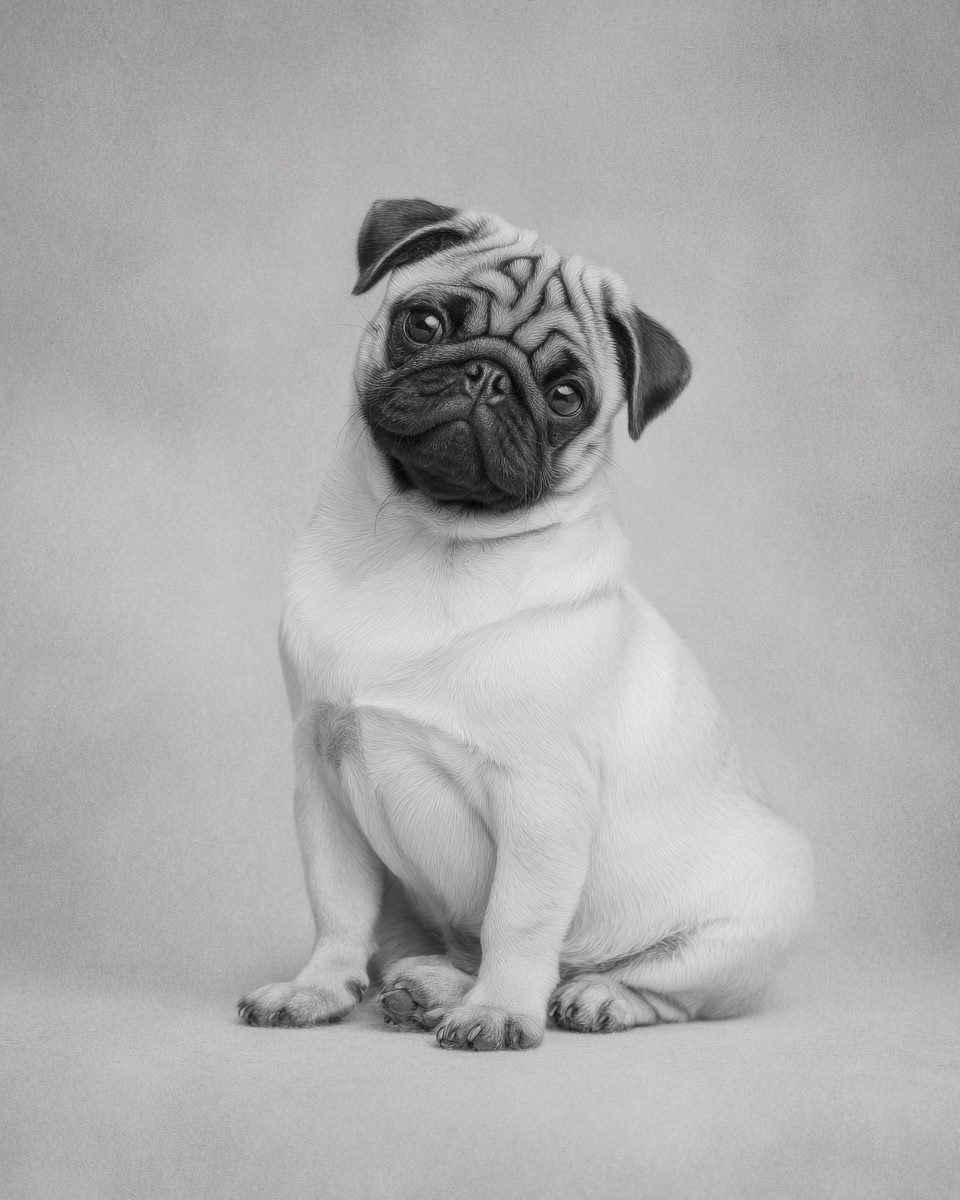Pug

Description
Ever wonder why Pugs have been beloved for centuries? Originating in ancient China during the Han dynasty, these little dogs were once the pampered pets of emperors, living in luxury and even guarded by soldiers. Their charm crossed continents, reaching European royal courts in the 1500s, and later winning hearts in England thanks to Queen Victoria’s fondness. Pugs are compact, weighing between 14 and 18 pounds, with a distinctive wrinkled face and a curled tail that springs tighter when they’re excited. What makes Pugs so endearing? They’re famously sociable and playful, often called the 'clowns of the dog world' for their goofy antics. While they can be a bit stubborn, they rarely show aggression, making them great companions for families. Their moderate barking fits their friendly nature, and they adapt well to both lively playtimes and relaxed cuddles on the couch.
Grooming
Pugs have a smooth, short coat that’s easy to manage but sheds moderately, so regular care helps keep your home tidy. Weekly brushing with a rubber curry or bristle brush removes loose hairs and keeps their skin healthy. Bathing every 4 to 8 weeks is enough—don’t overdo it or you risk drying out their skin. Their nails need trimming every 2 to 4 weeks to avoid discomfort, and ears should be checked and cleaned monthly to prevent buildup. - Brush weekly with rubber curry or bristle brush - Bathe every 4–8 weeks, no more - Trim nails every 2–4 weeks - Clean ears monthly - Pro tidy as needed Pugs often sport a fawn coat with a black mask, so keep an eye on their facial wrinkles and clean them gently to avoid dirt buildup. Pro tip: Use a damp cloth to wipe their face daily, especially around the folds, to prevent staining and keep their signature look fresh.
Learn the Smooth routine:
→ Complete Smooth Grooming Guide
Walking
How much exercise does a Pug really need? About 40 minutes of walking daily, split into one solid session, suits them well. They’re not marathon runners but enjoy a steady stroll that lets them explore without overexertion. Because of their short noses, it’s best to avoid strenuous activity in hot weather to keep them comfortable. Try a routine like this: a 10-minute warm-up walk around the block to get moving, followed by 30 minutes of a relaxed pace in a park or quiet neighborhood. This gives your Pug a chance to sniff around and socialize without pushing their limits. Keep an eye on their breathing and energy—if they start panting heavily, it’s time to slow down or take a break.
Boarding
Planning to board your Pug? A crate sized 30 to 36 inches is ideal—just enough room for them to stand, turn, and lie down comfortably without feeling lost. Pugs enjoy calm, gentle play rather than roughhousing, so staff should focus on low-key activities that keep them engaged without overwhelming them. Daily exercise with calm decompression is key during their stay, helping reduce stress and maintain their routine. Enrichment like puzzle toys or short cuddle sessions can keep their minds busy and spirits high. Staff should watch for signs of overheating or fatigue, especially since Pugs can struggle with breathing in warm or stressful environments. A quiet, cozy spot for rest rounds out the perfect boarding experience for these charming little dogs.